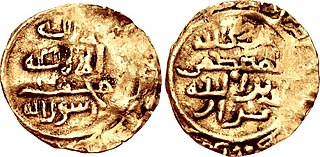
Sir Sultan Mahomed Shah, Aga Khan III served as the 48th Imam of the Nizari Ismaili sect of Islam. He was one of the founders and the first permanent president of the All-India Muslim League (AIML). His goal was the advancement of Muslim agendas and the protection of Muslim rights in British India. The League, until the late 1930s, was not a large organisation but represented landed and commercial Muslim interests as well as advocating for British education during the British Raj. There were similarities in Aga Khan's views on education with those of other Muslim social reformers, but the scholar Shenila Khoja-Moolji argues that he also expressed a distinct interest in advancing women's education for women themselves. Aga Khan called on the British Raj to consider Muslims to be a separate nation within India, the famous 'Two Nation Theory'. Even after he resigned as president of the AIML in 1912, he still exerted a major influence on its policies and agendas. He was nominated to represent India at the League of Nations in 1932 and served as President of the League of Nations from 1937 to 1938.

Isma'ilism is a branch or sect of Shia Islam. The Isma'ili get their name from their acceptance of Imam Isma'il ibn Jafar as the appointed spiritual successor (imām) to Ja'far al-Sadiq, wherein they differ from the Twelver Shia, who accept Musa al-Kadhim, the younger brother of Isma'il, as the true Imām.

Aga Khan is a title held by the Imām of the Nizari Ismāʿīli Shias. Since 1957, the holder of the title has been the 49th Imām, Prince Shah Karim al-Husseini, Aga Khan IV. Aga Khan is a direct descendant of Muhammad, the last prophet according to the doctrine of Islam.
In Shia Islam, the Imamah is a doctrine which asserts that certain individuals from the lineage of the Islamic prophet Muhammad are to be accepted as leaders and guides of the ummah after the death of Muhammad. Imamah further says that Imams possess divine knowledge and authority (Ismah) as well as being part of the Ahl al-Bayt, the family of Muhammad. These Imams have the role of providing commentary and interpretation of the Quran as well as guidance.
The Nizaris are the largest segment of the Ismaili Muslims, who are the second-largest branch of Shia Islam after the Twelvers. Nizari teachings emphasize independent reasoning or ijtihad; pluralism—the acceptance of racial, ethnic, cultural and inter-religious differences; and social justice. Nizaris, along with Twelvers, adhere to the Jaʽfari school of jurisprudence. The Aga Khan, currently Aga Khan IV, is the spiritual leader and Imam of the Nizaris. The global seat of the Ismaili Imamate is in Lisbon, Portugal.

Jamatkhana is an amalgamation derived from the Arabic word jama‘a (gathering) and the Persian word khana. It is a term used by some Muslim communities around the world, particularly sufi ones, to a place of gathering. Among some communities of Muslims, the term is often used interchangeably with the Arabic word musallah. The Nizārī Ismā'īlī community uses the term Jama'at Khana to denote their places of worship.

The Khoja are a mainly Nizari Isma'ili Shia community of people originating in Gujarat, India. The word Khoja is derived from the Persian word Khwaja, a term of honor, the word Khoja is used to refer to members of Baniya caste groups (traders), who converted to Islam from Hinduism under Muslim pirs (saints).
Pir Sadar ad-Din (Sadardin) or Pir Sadruddin was a fourteenth-century Nizari Ismaili da'i and is regarded as the founder of the Khoja Nizari Ismaili community, also called Satpanth.
Ginans are devotional hymns or poems recited by Shia Ismaili Muslims.

Bāṭin or baten literally means "inner", "inward", "hidden", etc. The Quran, for instance, has a hidden meaning in contrast to its exterior or apparent meaning, the zahir (zaher). Sufis believe that every individual has a batin in the world of souls. It is the inward self of the individual; when cleansed with the light of one's spiritual guide, it elevates a person spiritually. This notion is connected to Allah's attribute of the Hidden One, who cannot be seen but exists in every realm.
The History of Nizari Isma'ilism from the founding of Islam covers a period of over 1400 years. It begins with Muhammad's mission to restore to humanity the universality and knowledge of the oneness of the divine within the Abrahamic tradition, through the final message and what the Shia believe was the appointment of Ali as successor and guardian of that message with both the spiritual and temporal authority of Muhammad through the institution of the Imamate.

Ḥasan ʿAlā Zikrihi's-Salām or Hassan II was the hereditary Imam of the Nizari Isma'ilis of the Alamut Period from 1162 until 1166. From his capital of Alamut he ruled parts of Persia and Syria. His chief subordinate in Syria was Rashid ad-Din Sinan, the Old Man of the Mountain.

The Nizari state was a Nizari Isma'ili Shia state founded by Hassan-i Sabbah after he took control of the Alamut Castle in 1090 AD, which marked the beginning of an era of Ismailism known as the "Alamut period". Their people were also known as the Assassins or Hashashins.
Nūram Mubīn is a Gujarati Nizari Ismaili text written by Ali Muhammad Jan Muhammad Chunara (1881–1966) and first published in 1936. It tells of the lives of the Ismaili Imams from the seventh to the twentieth centuries, and is notable for being the first authorized Ismaili history written in an Indian vernacular language.
Nūr al-Dīn Muḥammad II or ʾAʿlā Muḥammad was the Nizari Isma'ili Imām of Alamūt who reigned the longest period out of any lord (Khudawand) of Alamut, forty-four years. He affirmed the policies of his father, Hassan Ala Dhikrihi's Salam, who had been stabbed to death a year after proclaiming Qiyāma, or Resurrection.
The Aga Khan Case was an 1866 court decision in the High Court of Bombay by Justice Sir Joseph Arnould that established the authority of the first Aga Khan, Hasan Ali Shah, as the head of the Khoja community of Bombay.
Haji Bibi v. His Highness Sir Sultan Mohamed Shah, the Aga Khan, often referred to as the Haji Bibi Case, was a 1908 court case in the Bombay High Court heard by Justice Russell. The case was fundamentally a dispute over the inheritance of the estate of Hasan Ali Shah, a Persian nobleman with the title Aga Khan I and the hereditary leader of the Nizari Ismailis. A number of the properties and other monetary assets had been passed down to Aqa Ali Shah, Aga Khan II and then to his grandson, Sir Sultan Muhammad Shah, Aga Khan III. The plaintiffs included Haji Bibi who was a widowed granddaughter of Aga Khan I and a few other members of the family that all claimed rights to the wealth. The decision is notable as it confirmed the Aga Khan III's exclusive rights to the assets of his grandfather and to the continued religious offerings by his followers, including some Khojas, as the 48th Imam of the Nizaris.
Imamshah Bawa Dargah is famous Muslim sufi Dargah complex in Pirana near Ahmedabad city in India. Pir Imam Shah Bawa founded the Satpanth faith around 600 years ago. He taught tolerance at the universality of religions until 1931, the complex was a private property belonging to the Saiyeds direct decedents of Imamshah Bawa. There is one old Masjid also existed in the complex.








